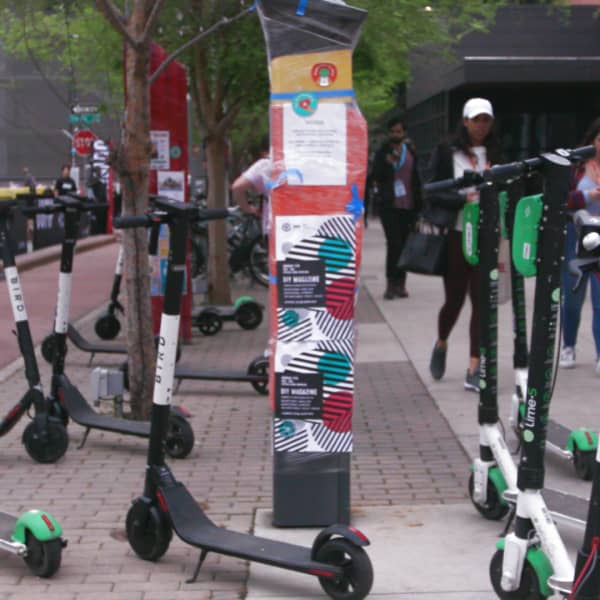
To truly understand what's its like to live small and comfortably, Jeff Wilson gave away most of his possessions and moved into a 33-square-foot dumpster.
Now, he thinks he has a solution to dwindling homeownership rates. His startup Kasita makes 352-square-foot smart tiny homes that are packed to the brim with technology and storage space. He's showing off a Kasita model home at the 2017 South by Southwest Festival in Austin, Texas.
"We're solving a very old, complex problem," said Wilson. "Real estate is thousands of years old. Land is where old wealthy families store all their money. So it's a very locked down system. So what we say is where is where are the cracks in the system?"
Current U.S. homeownership rates have dropped to a historical low, mostly because millennials aren't buying houses. Saddled by college debt and rising home prices, many can't save up to make the downpayment on market-value houses. Wages aren't increasing and cities are building new housing to meet demand, Wilson adds. At $139,000 a unit — which works out to a mortgage of about $800 a month plus land lease costs, according to Wilson — he thinks many more people can afford to call a Kasita home.
Wilson was previously a professor of environmental science at Huston-Tillotson University in Austin, Texas. In 2014, he decided to see how much space people really needed to live comfortably. He sold most of his possessions, found a 6 foot X 5.5 foot dumpster, placed it on the university campus, and moved in with his few favorite items, including a handful of books and a few shirts.
"It was absolutely insane," Wilson admitted. "I just wanted to try it for an experiment, what happens when you push the absolute limits of small and base level."
"Professor Dumpster" lived in his repurposed home for about one year, save a few nights when he was traveling or staying with friends. But even though he learned ways to make the space seem larger like painting the walls white and creative storage hacks, there were still some things he couldn't fix. Architects and engineers couldn't figure out how to fit a kitchen and bathroom inside the dumpster. He resorted to using the dorm and school gym bathrooms.
What Wilson learned was while 33 square feet might be too small, people could definitely downsize their living space in order to have more disposable income for traveling and other experiences. However, a house had to feel like a home and not make the person give up any conveniences.
Sure, Kasita's are tiny at first glance. But, they come with ultra-modern amenities like Amazon Alexa-powered lighting modes and dynamic windows that have programmable tint modes, as well as a clever design that maximizes its space while giving you tons of storage options. For example, a small staircase can be pulled out like a dresser, while the queen-sized bed completely tucks under the kitchen floor when not in use.
"This is a 12,000-pound piece of hardware filled with software," Wilson said. "I don't think the Internet of Things are really useful until it becomes the Internet of experience."
The pods are portable with a crane, and can be placed anywhere. Wilson sees a future where people can rent spaces on parking structures or stack Kasita's in premium spaces to take advantage of great location.
And, Wilson is embracing the small lifestyle permanently. After SXSW, he plans to move into into the model Kasita with his partner. He's downsized his possessions even more. He's down to one shirt.
"You're lucky you caught me on the day after I dry cleaned it," he joked.




